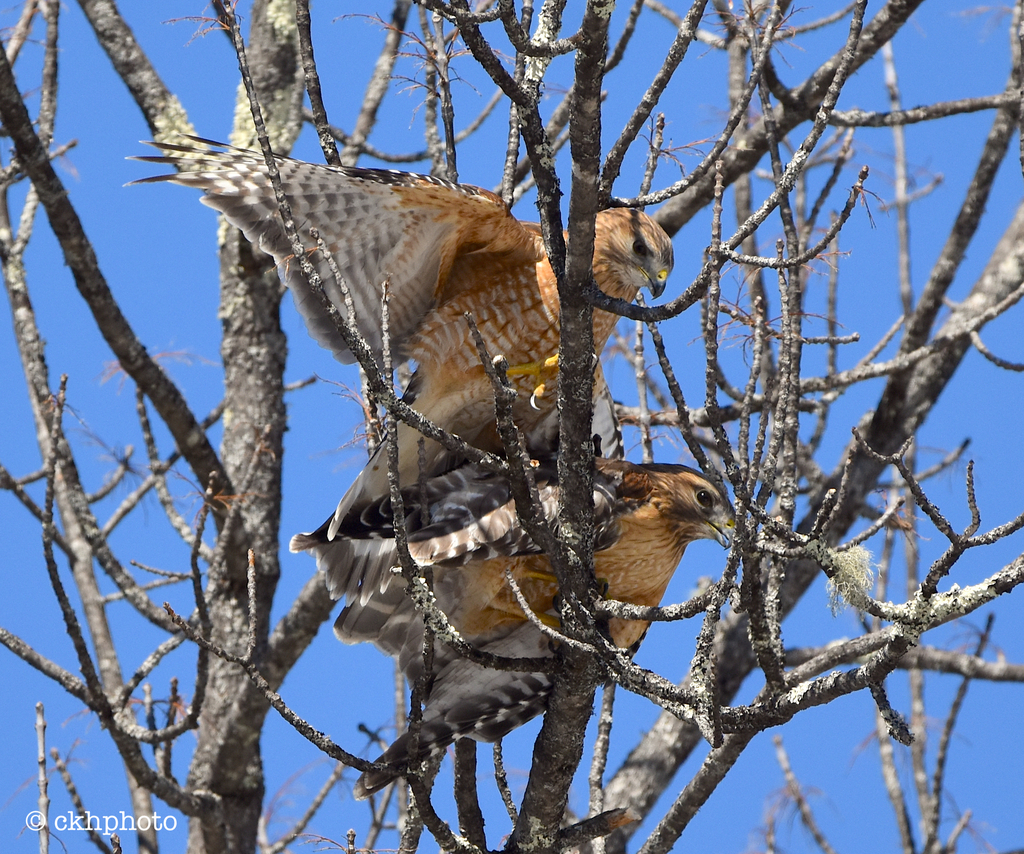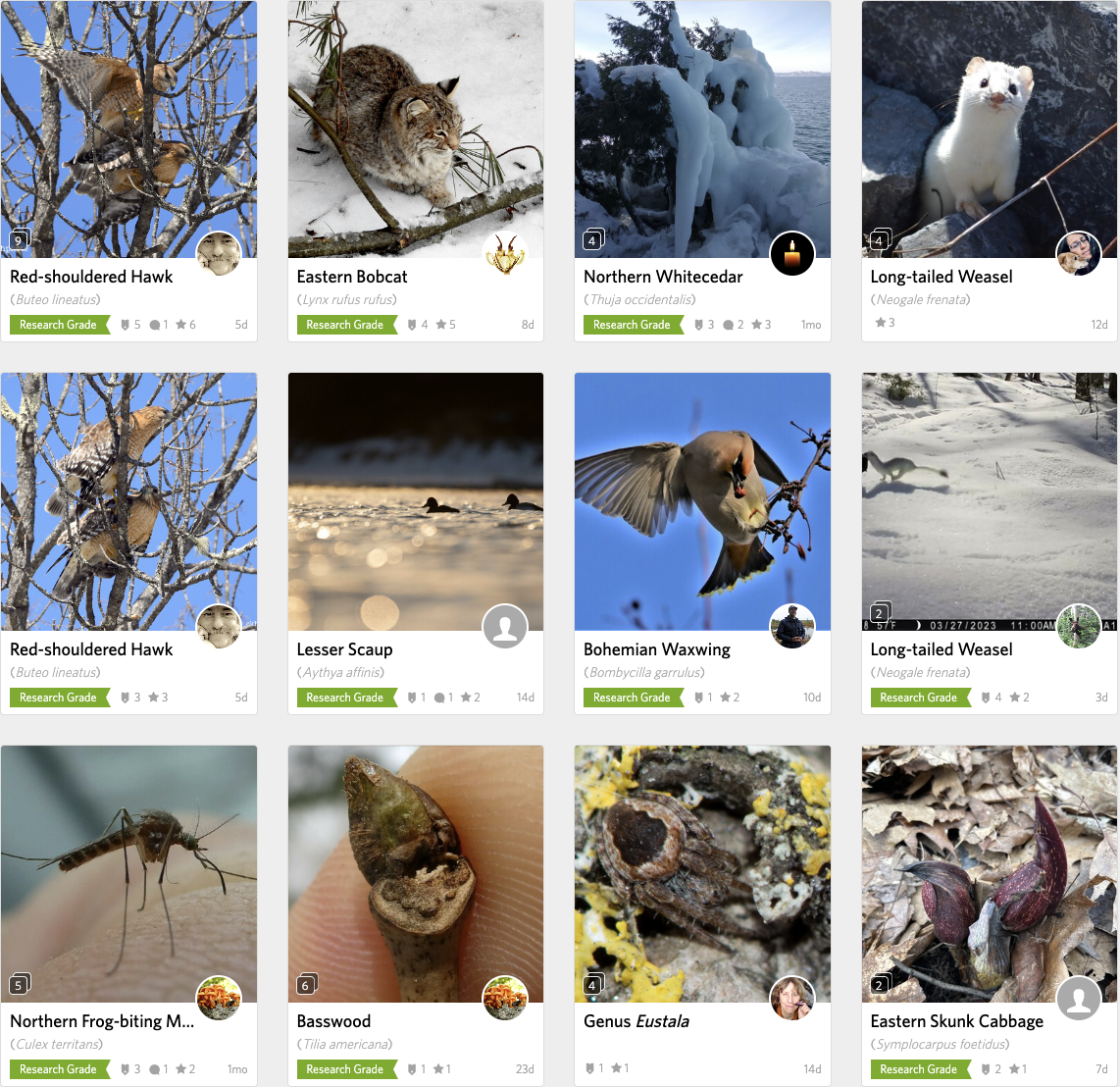March 2023 Photo-observation of the Month

A pair of Red-shouldered Hawks exhibit a “Probable” Breeding Code, in this case “C – Courtship, Display or Copulation.” © @ckhunt
Congratulations to @ckhunt for winning the March 2023 Photo-observation of the Month for the Vermont Atlas of Life on iNaturalist! His photo of copulating Red-shouldered Hawks received the most faves of any iNaturalist observation in Vermont during the past month.
While it may not feel like it some days, spring is in the air and with every minute of lengthening daylight, bird courtship will continue to ramp up. Some species start early, like the Great Horned Owls that are sitting on eggs in the Vermont woods as early as February. Others, such as these Red-shouldered Hawks, begin the process of starting a family a little later, with courtship and copulation taking place in late March and early April. During multi-year breeding bird atlases, such as the Vermont Breeding Bird Atlas or the recently wrapped up Maine Bird Atlas, special codes are used to note different types of breeding bird behaviors, and even outside of atlases these codes can be used as a valuable tool to learn more about breeding birds. These include everything from a male and female Northern Cardinal hanging out in a yard together (P – Pair in Suitable Habitat) to a Carolina Wren with a bill full of dried grasses (CN – Carrying Nesting Material) to a chattering tree cavity full of fledgling Yellow-bellied Sapsuckers (NY – Nest with Young). To see a full list of these breeding codes and their definitions, click here. Assigning Breeding Codes to birds on a Vermont eBird checklist is more than just a good way to collect data on breeding birds, it is also a great way to focus on the study of bird behavior and to determine what birds might rely on your backyard, your local natural area, or your favorite patch of woods to raise the next generation.

With 3,050 observations submitted by 595 observers in March, it was very competitive. Click on the image above to see and explore all of the amazing observations.
Visit the Vermont Atlas of Life on iNaturalist where you can vote for the winner this month by clicking the ‘fave’ star on your favorite photo-observation. Make sure you get outdoors and record the biodiversity around you, then submit your discoveries and you could be a winner!






